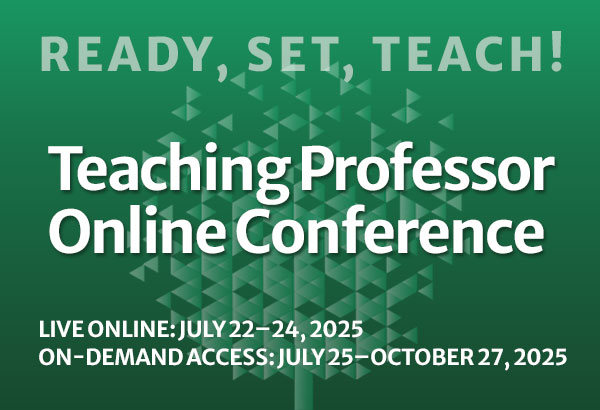As I contemplate my syllabi for a new semester, I possess renewed hope for students eager to discuss anything at 8 a.m., yet I have taught long enough to know that I will simply appreciate clean clothes and brushed teeth. As reality sets in, I add to my grading criteria an element that I hope will encourage engagement from even the most timid learners.
Often labeled “participation points,” this topic has been explored from myriad perspectives in any number of books and articles published in the last 20 years. Some approaches to participation include using discussion to facilitate teaching and learning, implementing standard-based grading to eliminate participation points, or creating rubrics for participation to make standards visible to the students.
Here I must acknowledge that my 8 a.m. courses are usually populated by freshmen; many of these students, educated during the NCLB era and fresh from standardized tests and state-mandated EOCTs here in Georgia, struggle to adjust to rigorous college expectations. Most can’t comprehend or articulate our expectations for participation and thus often don’t participate fully.
And here’s the rub—first-year students often don’t know why engagement is important either in their classroom or their learning. They’ve yet to learn that participation is an investment in themselves. We know that engaged learners are active learners, but how do we help our students shift from grade seekers to knowledge seekers? Even college students need to be reminded that they are building intellectual and personal skills that will serve them well in all future professional and personal endeavors.
In order to help students become aware of the need for a new level of academic performance, let’s change our own strategies concerning participation points.
- Use a new moniker
- Instead of participation points, call them engagement points
- The goal is to move students from grade seekers (passive regurgitation of information—written or verbal) to knowledge seekers (independent, engaged learners who see, reflect on, and share their thoughts on the complexity of problems/situations)
- Balance preparation and participation
- Lead with preparation
- Engagement = Preparation + Participation
- Create opportunities for students to share homework or research
- Make homework vital to class conversation and student learning, not simply a formative check preceding a summative assessment
- Share and review your Engagement Rubric from Day 1 (below is a version of the rubric I created for my 2000- and 3000-level students)
- Make the balance of preparation and participation part of your classroom routine in independent daily writing or group work by encouraging students to reference their notes and research.
- Students must score themselves against the Engagement Rubric
- Metacognitive exercises help students understand their responsibility in their own learning
- Make this a quick two minute monthly activity
- Repetition allows students to reacquaint themselves with the desired behavior
- A monthly check allows you to praise, schedule conferences, or recommend tutoring while the semester is still salvageable.
Engagement Rubric
|
ENGAGEMENT |
PREPARATION (outside of class) |
PARTICIPATION (in class) |
|
I am fully engaged |
Exemplary Preparation
I read carefully and research background information on the author/topic ahead of time. I research social, cultural, historic, economic, political connections to the text/topic. I consider the course’s Essential Questions as I prepare. |
Animated Participation
I attend class and I speak daily. I try to advance the conversation by presenting evidence to support my ideas. I present related research, implications, or complexities in the text/situation/topic. |
|
I am occasionally engaged |
Novice Preparation
I read assignments ahead of time. I do basic research to understand the material, but I do not go beyond the obvious. Sometimes I consider the course’s Essential Questions as I prepare. |
Occasional Participation I attend class daily. I speak occasionally—mainly when called upon by the professor. Sometimes I present general evidence to support my position. |
|
I’m not sure how to be engaged; I need some direction |
Inadequate preparation
Sometimes I do the reading. I don’t research to understand the material, nor do I go beyond the obvious. |
Inadequate participation
My attendance is inconsistent. I participate only when prompted. |
|
I am |
No Preparation
I neither read nor research before class. |
No Participation
My attendance is inconsistent. I do not speak in class. |
- Recognize quiet learners (during and after class)
- Accept e-mail responses from quiet students
- Accept reflective e-mails—after class discussion has occurred
- Ask permission to share their ideas (with attribution) in the next class session
- Re-direct garrulous students who don’t full engage with the content
- Reinforce preparation by encouraging “talkers” to support their ideas with research, articles, quotations from the text as hand, homework, etc.
Engaged students are agents in their own education. Of course, the sole responsibility for engagement mustn’t fall squarely on the students’ shoulders; professors can prepare the classroom and create daily activities to support knowledge-seeking, engaged students. Take a look at your syllabi and lesson plans to ensure that you provide opportunities for students to share their preparation, research, and new knowledge gleaned, even early in the morning.
Dr. Stephanie Almagno is a professor of English at Piedmont College, Demorest, GA.






